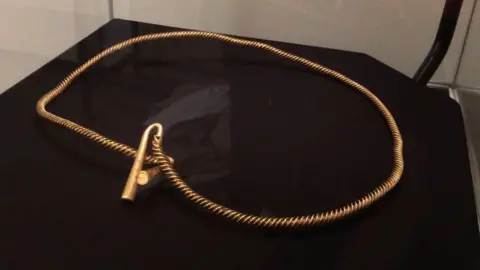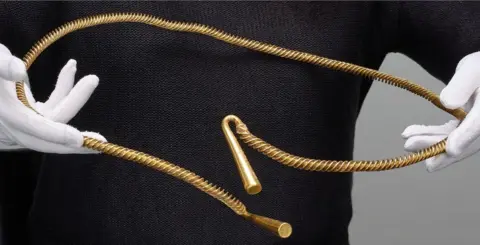'Most important' Ely Bronze Age gold torc on display
 BBC
BBCOne of England's "most important Bronze Age finds" has gone on display for the first time near to where it was found.
The £220,000 gold torc was unearthed by metal detectorists in an east Cambridgeshire field last year.
It was probably left as a "gift to the gods" and its diameter is "larger than any adult male trousers" according to Neil Wilkin, from the British Museum.
The bracelet-like ring is more than 3,000 years old and was bought by Ely Museum using a series of grants.
It was declared treasure at an inquest and the finder and landowner will receive a reward.
Elie Hughes, Ely Museum curator, said the detectorist "had no idea what it was until he cleaned it", at which point he reported it to the county finds liaison officer.
 Trustees of the British Museum
Trustees of the British MuseumDr Wilkin, who is responsible for the British Museum's British and European Bronze Age Collection, described it as "one of the most important Bronze Age finds that's ever been made in England".
He said the torc is the "largest of its type in the whole of Europe" and its diameter is "larger than any adult male trousers that you can buy in a shop today".
He speculated the torc could have been worn over bulky clothing or by a sacrificial animal but its use "remains a guessing game".
At this time in the Bronze Age, people were no longer being buried with important objects - instead they deposited them at "important places in the landscape".
Dr Wilkin said: "We don't necessarily know why, but we think it was a gift to the gods, designed to secure good harvests or a healthy family.
"I've calculated you could probably make 10 smaller objects out of this one, so it's a really big sacrifice of wealth and status."
